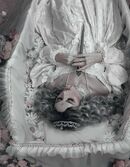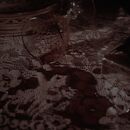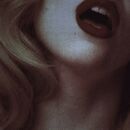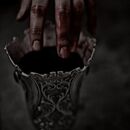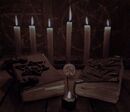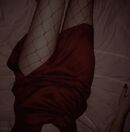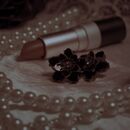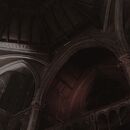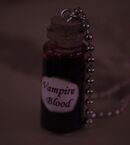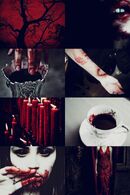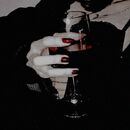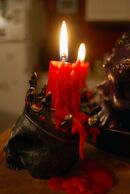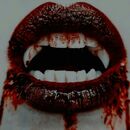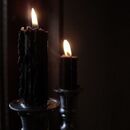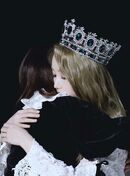A Vampire is a creature from folklore that subsists by feeding on the vital essence (generally in the form of blood) of the living. They wear clothes similar to the Gothic theme, which is why 'vampire' is a derogatory term for goths; however, goths have reclaimed vampiric fashion styles as a part of their aesthetic or even as another aesthetic entirely.
History[]
Vampires originated in the Slavic folklore of the Balkans. Often being associated with the region of Transylvania, today located in Romania, the origins of Vampire folklore can be traced back to multiple Balkan countries, including Serbia, Croatia, Bulgaria and Romania. The myth of Vampires later spreaded to the rest of Europe. However, they were not the same as what we think of as the vampire today. The most famous vampire story is Dracula by Bram Stoker, where many of the tropes and symbols - such as bats, capes, and fangs - associated with vampires today originated.
The idea of vampire hunters, also called slayers, is intertwined with the vampire myth. Garlic, holy water, crucifixes, and wooden stakes are all said to be tools capable of injuring or killing a vampire. Vampires are also commonly said to be not visible in mirrors.
In older vampire stories, most vampires were male and seduced much younger human women into becoming vampires. In more modern vampire fiction, vampires can be of any gender, with female vampires just as capable of seducing men. Child vampires are extremely rare, and when they do exist they are usually the child of an adult vampire and not a human child who was turned.
Written[]
Vampire literature spans back hundreds of years, from the era of Bram Stoker's Dracula to the Anne Rice's The Vampire Chronicles to the ever-controversial Twilight series by Stephenie Meyer. Seeing as the Vampire trope was born of the written word, it would naturally tie close to literature, and there would be many interpretations of vampires over the years. An example of this with lesbian subtext is the 1872 novella Carmilla by Sheridan Le Fanu.
Games[]
Created in 1991, Vampire: The Masquerade is a tabletop role-playing game set in a gothic-punk version of our world, in which vampires are the main protagonists. Focusing on elements of personal horror, the vampires quest to balance their predator and immortal nature with their humanity, the game explores themes of morality, humanity and sanity in a world of supernatural, political and personal dangers.
The game brought a more modern and deeper twist on the myth of the vampire, creatures of old in a world growing colder and bleaker.
Several versions of the game have been published, including Vampire: The Dark Ages, set in the 1200s and Victorian Age: Vampire, set in the late 1800s, as well as video-games, such as Vampire: The Masquerade - Bloodlines or Vampire: The Masquerade - Coteries of New York.
Visuals[]
Vampire visuals will often play upon the predator/prey dynamic often associated with Vampire stories, with the "predator" often being the one engaging in the Vampire aesthetic while the "prey" is a more innocent, childlike person accompanying the person who engages in the aesthetic. Specific visuals, to name a few of them, are:
- Bats
- Bloody hands, teeth, lips, etc.
- Lips with overhanging fangs
- Oil paintings
- Candles
- Castles
- White nightgowns
- Glasses with red liquid - blood or wine
Fashion[]
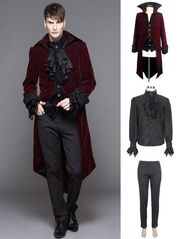
An example of male vampire aesthetic fashion.
Vampire fashion is influenced by the styles of 17th and 18th century as well as the Victorian era. Vampires tend to dress in clothes from the era when they were turned, and look elegant but somewhat out of time. It can include any combination of the following:
- Dark red, black, grey clothing
- Heels, platform boots, heeled boots
- Boots
- Gloves
- Fancy hats
- Stockings
- Plain or worn out dresses (Usually off the shoulder, sleeveless or spaghetti strap)
- Short-shorts
- Mini skirts
- Tight black pants
- Fishnet clothing
- Fangs
- Clothing from our reminiscent of the late 19th century (or the period your vampire self hails from), especially if in black or originally designed for men
- Pallid, washed-out makeup
Media[]
Comics[]
- American Vampire
- Blade (Marvel)
- Noblesse
- Unholy Blood
- unTOUCHable
Literature[]
- "The Vampyre" by John William Polidori
- The Black Vampyre: A Legend of St. Domingo by Uriah Derick D'Arcy
- Varney the Vampire by James Malcolm Rymer and Thomas Peckett Prest
- Carmilla by Sheridan Le Fanu
- Dracula by Bram Stoker
- Jane Slayre by Sherri Browning Erwin
- The Parasol Protectorate series by Gail Carriger
- The Vampire Chronicles series by Anne Rice
- 'Salem's Lot by Stephen King
- The Twilight series by Stephanie Myer
- Vampire Academy series by Richelle Mead
- A Discovery of Witches series by Deborah Harkness
Manga & Anime[]
- #DRCL – Midnight Children
- Blood+
- Bloodivores
- Blood Lad
- Call of the Night
- Dance with Devils
- Dance in the Vampire Bund
- Devils Line
- Diabolik Lovers
- Hellsing
- Itsuka Tenma no Kuro Usagi
- Karin
- Kizumonogatari
- Owari No Seraph
- Rosario + Vampire
- Servamp
- Sirius the Jaeger
- The Vampire Dies in No Time
- Tonari no Kyuuketsuki-san
- Trinity Blood
- Tsuki to Laika to Nosferatu
- Tsukuyomi: Moon Phase
- Undead Girl Murder Farce
- Vampire Hunter D
- Vampire Knight
- Vampire in the Garden
- Vanitas no Karte
- Visual Prison
- Vlad Love
Movies[]
- 30 Days of Night (2007)
- Abraham Lincoln: Vampire Hunter (2012)
- A Girl Walks Home Alone at Night (2014)
- Bit (2019)
- Blade franchise
- Bloodsucking Bastards (2015)
- Bram Stoker's Dracula (1992)
- Dracula (1931)
- Dracula Untold (2014)
- Fright Night (2011)
- From Dusk Till Dawn (1996)
- Ganjia & Hess (1973)
- Interview with the Vampire (1994)
- Let Me In (2010)
- Let The Right One In (2008)
- Martin (1977)
- Morbius (2022)
- Near Dark (1987)
- Nosferatu (1922)
- Nosferatu the Vampyre (1979)
- Only Lovers Left Alive (2013)
- Queen of the Damned (2002)
- The Hunger (1983)
- The Librarian III: The Curse of the Judas Chalice (2008)
- The Lost Boys (1987)
- Thirst (2009)
- Underworld franchise
- Vamp (1986)
- Vampire Academy (2014)
- Vampyr (1932)
- Valerie & Her Week of Wonders (1970)
- What We Do in the Shadows (2014)
TV Shows[]
- A Discovery of Witches
- Angel
- Being Human
- Buffy the Vampire Slayer
- Carmilla (web series)
- Dark Shadows
- Dracula's Daughter
- Interview With The Vampire (AMC TV series)
- Preacher
- True Blood
- The Vampire Diaries
- Van Helsing
- Vampyros Lesbos
- What We Do in the Shadows (TV series)
Games[]
- A Vampyre Story
- BloodLust
- BloodRayne (franchise)
- Castlevania (franchise)
- Diabolik LoversInfamous: Festival of Blood
- Legacy of Kain
- Nosferatu: The Wrath of Malachi
- The Elder Scrolls V: Dawnguard
- The Witcher 3: Blood and Wine
- Vampire: The Masquerade (franchise)
- Vampyr
Music[]
Vampire music refers to music lyrically about vampires or simply music with dark themes, which includes Baroque rock, Dark Ambient music, Industrial, Goth, classic rock, metal, classical, and anything that conveys a dark, edgy, moody atmosphere.
Artists[]
- Playboi Carti
- Annie Lennox
- Theatres Des Vampires
- As Angels Bleed
- The Brobecks
- Lacuna Coil
- Poppy
- Bobby Boris Pickett
- The Sisters of Mercy
- Siouxsie and The Banshees
- Screamin' Jay Hawkins
- The Cruxshadows
- Mayhem
- Bathory
- Judas Priest
- Richard Wagner
- Pyotr Tchaikovsky
- Ludwig Van Beethoven
- Frederic Chopin
Activities[]
Vampire Lifestyle[]
Vampire lifestyle is a term for a contemporary subculture of people, largely within the Goth subculture, who consume the blood of others as a pastime; drawing from the rich recent history of popular culture related to cult symbolism, horror films, the fiction of Anne Rice, and the styles of Victorian England. Active vampirism within the vampire subculture includes both blood-related vampirism, commonly referred to as sanguine vampirism, and psychic vampirism, or supposed feeding from pranic energy. Vampirism and the vampire lifestyle also represent a relevant part of modern day's occultist movements. The mythos of the vampire, his magical qualities, allure, and predatory archetype express a strong symbolism that can be used in ritual, energy work, and magic, and can even be adopted as a spiritual system. The vampire has been part of the occult society in Europe for centuries and has spread into the American subculture as well for more than a decade, being strongly influenced by and mixed with the neo gothic aesthetics.[1]
Vampires and sexual themes[]
All the neck biting associated with vampires has led to vampire themed kink and erotica. Many popular Tumblr textposts about vampires make humorous references to the sexiness of biting. Posts about finding vampire boyfriends and girlfriends by knocking on the door of an ancient castle during a rainstorm are also popular.
Resources[]
External links to help get a better understanding of this aesthetic.
Playlists
- Best Baroque Pop songs 2018 by Nymphya
- Baroque Rock by Rain•Bow
- Vampirecore🥀⚰️
- VAMPIRECORE / VAMPCORE by 10.28 Productions
- A Discovery of Witches soundtrack
- Vampires are socially acceptable parasites <3

